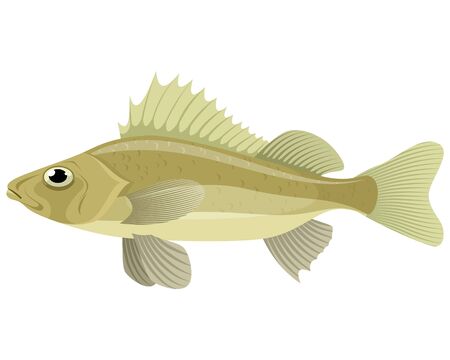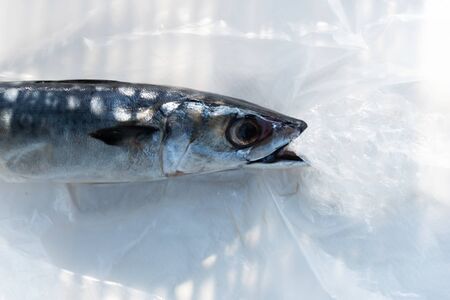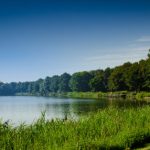Introduction to Alaskan Fly Fishing
Fly fishing in Alaska is more than just a pastime—its an adventure that captures the wild spirit of the Last Frontier. Anglers from all over the world travel to Alaska, drawn by its legendary runs of salmon and trout, as well as the promise of exploring untouched wilderness far from crowded rivers and noisy highways. The states rugged scenery sets the stage for unforgettable fishing expeditions, where snow-capped peaks tower over crystal-clear streams and wildlife roam freely along the banks.
Why Alaska Stands Out for Fly Fishing
Alaska has earned a reputation as a bucket-list destination for fly fishers thanks to its:
| Feature | What Makes It Special |
|---|---|
| Untouched Wilderness | Vast areas with little human impact, offering pristine waters and habitats. |
| Diverse Fish Species | Home to all five Pacific salmon species, trophy-sized rainbow trout, Arctic grayling, and Dolly Varden. |
| Remote Adventures | Access to off-the-grid rivers and lakes via floatplane or jet boat, promising solitude and pure nature. |
| Breathtaking Scenery | Dramatic landscapes featuring mountains, forests, glaciers, and abundant wildlife. |
The Allure of Remote Waters
Many anglers choose Alaska for the chance to fish in places few others ever reach. Whether you’re casting a line for wild salmon on a backcountry river or stalking giant rainbow trout in a secluded lake, each trip feels like a true expedition. Floatplane drop-offs and wilderness lodges add to the sense of adventure, making every journey memorable.
A World-Class Destination for Anglers
If you love fly fishing, Alaska offers everything you could want: incredible fish runs, remote beauty, and an unspoiled environment. It’s no wonder it tops so many anglers’ dream lists. With each cast into these wild waters, you become part of a timeless tradition—one that celebrates both the thrill of the catch and the awe-inspiring power of nature.
2. The Salmon Runs: Chasing Alaska’s Iconic Fish
Alaska is world-famous for its epic salmon runs, drawing fly anglers from across the globe. The sight of thousands of wild salmon pushing upstream is a true bucket-list experience, and the thrill of hooking into one of these hard-fighting fish is unforgettable. Let’s break down what makes Alaska’s salmon migrations so legendary, when and where to go for each species, and some must-know techniques for fly fishing success.
Understanding Alaska’s Salmon Migrations
Each summer and fall, millions of Pacific salmon return from the ocean to Alaska’s rivers to spawn. There are five main species—King (Chinook), Sockeye (Red), Coho (Silver), Pink (Humpy), and Chum (Dog)—and each has its own migration timing and preferred river systems. Planning your trip around these runs can make all the difference in your fly fishing adventure.
Best Seasons & Rivers for Each Salmon Species
| Salmon Species | Best Time | Top Rivers |
|---|---|---|
| King (Chinook) | Mid-June to mid-July | Kennecott, Nushagak, Kenai, Kasilof |
| Sockeye (Red) | Late June to late July | Bristol Bay, Kenai, Russian River |
| Coho (Silver) | August to September | Kodiak Island, Sitka, Susitna River |
| Pink (Humpy) | Mid-July to August (even years) | Prince William Sound, Resurrection Creek |
| Chum (Dog) | July to August | Kuskokwim, Yukon, Togiak River |
Essential Fly Fishing Techniques for Salmon Success
If you’re new to Alaskan salmon fly fishing or just want a refresher on local know-how, here are some tried-and-true tips:
- Select the right flies: Use flashy streamers like egg-sucking leeches or classic patterns such as the Alaskan Egg Imitator. Bright colors often work best in glacial water.
- Mend your line: Mastering the art of mending helps present your fly naturally in fast-moving currents—crucial for enticing strikes.
- Mind your gear: Use sturdy 8-10 weight rods with strong reels; Alaska’s salmon are powerful fighters!
- Fish deep: Salmon often hug the bottom, so weighted flies or sink-tip lines can help get your presentation into the strike zone.
- Tread lightly: Stealth matters—avoid splashing or wading too aggressively near holding fish.
The Alaskan Salmon Experience: More Than Just Fishing
Catching salmon in Alaska isn’t only about filling your net—it’s about becoming part of one of nature’s most dramatic journeys. Whether you’re casting from a drift boat on the Kenai or wading a remote tributary in Bristol Bay, every angler leaves with stories of wild landscapes and unforgettable fish. The thrill of the run is calling—are you ready?

3. Trout Fishing in Alaskan Waters
Exploring Alaska’s Trout Diversity
Alaska is a dream destination for trout anglers, offering some of the most pristine waters and diverse trout species in North America. The state is famous for its vibrant rainbow trout and stunning Dolly Varden, both of which thrive in Alaskas cold, clear rivers and remote lakes. Each species brings its own excitement to the fly fishing experience, making every trip an adventure.
Meet the Stars: Rainbow Trout and Dolly Varden
| Species | Appearance | Typical Size | Best Season |
|---|---|---|---|
| Rainbow Trout | Bright colors with a pink stripe along the side | 18–30 inches | June–September |
| Dolly Varden | Olive-green back with pinkish spots and a white belly | 16–28 inches | July–October |
Fly Selection Tips for Alaskan Trout
- Mimic Local Insects: Use patterns like bead-head nymphs, caddis flies, and stoneflies to match the hatch. Alaska’s trout are used to feeding on a wide range of aquatic insects.
- Egg Patterns: During salmon runs, egg imitation flies (like Glo Bugs) are extremely effective since trout feed heavily on loose salmon eggs drifting downstream.
- Swing Streamers: Larger streamers and leech patterns work well, especially when targeting bigger rainbows or Dolly Varden in deeper pools or faster currents.
- Adjust Colors: Bright colors like orange or chartreuse can trigger aggressive strikes from curious trout, while more natural colors often work better in clear water.
Local Tactics for a Memorable Catch
- Stealthy Approach: Alaskan trout can be wary, especially in heavily fished areas. Move quietly along the riverbanks and avoid casting shadows over your target area.
- Target Structure: Look for trout near submerged logs, deep pools, undercut banks, and behind boulders where they hide from predators and wait for food to drift by.
- Timing Matters: Early morning and late evening tend to be prime times for active feeding. Take advantage of the long summer daylight hours for extended fishing sessions.
- Catch & Release: Many Alaskan fisheries encourage catch-and-release to preserve these world-class trout populations. Handle fish gently and use barbless hooks whenever possible.
Tapping into the variety of Alaskan waters—from crystal-clear creeks to wild, untamed rivers—will put you face-to-face with unforgettable rainbow trout and Dolly Varden. With the right flies and local know-how, every cast has the potential to hook the fish of a lifetime!
4. Remote Expeditions and Backcountry Adventures
If you’re looking for the true spirit of Alaskan fly fishing, nothing compares to a remote expedition. These adventures take you far beyond the usual fishing spots, deep into untouched wilderness where salmon and trout thrive in pristine waters. Getting there is half the fun—and half the challenge.
Getting Off the Grid: How Anglers Reach Alaska’s Hidden Waters
Alaska’s remote streams and lakes are often inaccessible by road. Most anglers rely on floatplanes or bush planes to reach these secret spots. Imagine soaring over vast forests, snow-capped peaks, and winding rivers before landing on a glassy lake or gravel bar. Some trips also use boats or rafts to travel even farther into the wild.
| Access Method | What’s Involved | Best For |
|---|---|---|
| Floatplane Drop-Offs | Fly from a hub town (like Anchorage) directly to remote water; pilot lands on lakes or rivers. | Adventurous anglers seeking isolation and unique experiences. |
| Bush Plane Charters | Small aircraft land on gravel bars or remote airstrips near streams. | Small groups, custom trips, reaching rarely-fished waters. |
| Boat/Raft Expeditions | Paddle or motor up river systems after initial flight drop-off. | Multi-day trips, moving between several fishing locations. |
| Wilderness Lodges | Stay at an off-grid lodge with daily guided access to remote waters. | Those wanting comfort and adventure together. |
The Thrill of Backcountry Fishing in Alaska
The reward for making the trek? Solitude, incredible scenery, and untouched fisheries teeming with wild salmon and trout. You might not see another angler for days. Wildlife sightings—bears, eagles, moose—are common, adding even more excitement to your adventure.
What Makes Remote Expeditions Special?
- No Crowds: Enjoy fishing in peace, without competition for the best holes.
- Diverse Species: Remote waters offer chances at multiple salmon species, rainbow trout, Arctic char, grayling, and more.
- Pure Wilderness: Experience Alaska’s wild side—towering mountains, endless forests, rushing rivers—all just outside your tent or lodge window.
- Camaraderie: Whether with friends or new acquaintances, sharing a remote camp bonds anglers for life.
Packing Tips for Remote Alaskan Adventures
- Layered Clothing: Weather changes fast; pack light but warm layers.
- Bug Protection: Mosquitoes can be fierce—bring repellent and head nets!
- Tough Gear: Use durable rods, reels, and lines suited for big fish and rough conditions.
- Safety First: Satellite phone or emergency beacon is a smart call when you’re off the grid.
If you crave a true backcountry adventure—where every cast brings the possibility of a trophy catch in wild surroundings—Alaska’s remote expeditions offer memories that last a lifetime.
5. Pro Tips and Responsible Angling
Expert Advice for Your Alaskan Adventure
Heading out on an Alaskan fly fishing expedition is a dream come true, but it comes with its own set of challenges and rewards. We’ve gathered pro tips from seasoned local guides to help you make the most of your experience while respecting Alaska’s wild beauty.
Gear Essentials: What the Pros Recommend
| Gear Type | Recommended By Guides | Why It Matters |
|---|---|---|
| Rods & Reels | 8-10 wt for salmon, 5-7 wt for trout | Handles strong fish and swift currents |
| Waders & Boots | Chest waders, studded boots | Keeps you dry and safe on slippery rocks |
| Flies & Leaders | Egg patterns, streamers, mouse flies | Mimics local food sources for better strikes |
| Layered Clothing | Waterproof jacket, thermal base layers | Alaska’s weather can change fast—be ready! |
| Polarized Sunglasses | Essential for eye protection and spotting fish | Reduces glare, helps you read the water better |
| Sunscreen & Bug Spray | High SPF, DEET-based repellent | The midnight sun and mosquitoes are no joke! |
Tuning Into Alaskan Weather and Safety Tips
- Always check the forecast: Mountain storms can roll in quickly; pack rain gear even if it looks clear.
- Bears are part of the adventure: Make noise near brushy banks, carry bear spray, and keep your snacks packed tight.
- Fish with a buddy: Remote rivers mean help can be far away. Let someone know your plans before heading out.
- Mind your footing: River rocks can be slick—move slowly and use a wading staff for balance.
- PFDs save lives: If you’re fishing from a boat or floatplane drop-off, wear a personal flotation device at all times.
Casting With Conservation in Mind: Protecting Alaska’s Waters
The magic of Alaskan fly fishing depends on healthy ecosystems. Pro anglers urge everyone to follow these conservation best practices:
Caring For Fish and Rivers
- Catch and release: Use barbless hooks, wet your hands before handling fish, and release them quickly back into the water.
- Packing out trash: Leave every riverbank cleaner than you found it—pack out used leaders, line, and snack wrappers.
- Avoid spreading invasives: Clean your gear thoroughly between rivers to prevent the spread of aquatic hitchhikers like didymo or invasive snails.
- No campfires near banks: Use designated fire rings when camping to protect fragile riparian areas.
- Tread lightly: Stick to established trails to avoid trampling sensitive vegetation along river edges.
The True Spirit of Alaskan Fly Fishing Expeditions
The heart of every great Alaskan angling story is respect—for the fish, for fellow anglers, and for the stunning wilderness that makes these adventures possible. With the right gear, safety smarts, and a commitment to conservation, you’ll be part of preserving this wild paradise for generations of anglers to come.

